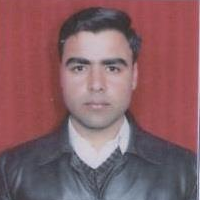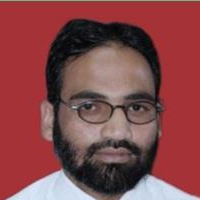International Journal of Image, Graphics and Signal Processing (IJIGSP)
IJIGSP Vol. 8, No. 5, 8 May 2016
Cover page and Table of Contents: PDF (size: 538KB)
Imaging Techniques for Cancer Diagnosis and Scope for Enhancement
Full Text (PDF, 538KB), PP.83-91
Views: 0 Downloads: 0
Author(s)
Index Terms
Imaging techniques, cancer diagnosis, image enhancement, image artifacts
Abstract
Imaging techniques are used to create images of structure, function and pathology of human body organs for cancer diagnosis. Various imaging techniques like X-ray, Ultra-Sonography (US), Positron Emission Tomography (PET), Ultrasound, MRI etc. are used for cancer diagnosis. These imaging techniques have gone through Lot of advancements during lost few years. These techniques vary in the technology and application. Various artifacts exist in these imaging techniques and images produced by theses imaging techniques. These artifacts can be exploited to enhance the imaging technique and the images produced by them.
Cite This Paper
Showkat Hassan Malik, Tariq Ahmad Lone, S. M. k Quadri,"Imaging Techniques for Cancer Diagnosis and Scope for Enhancement", International Journal of Image, Graphics and Signal Processing(IJIGSP), Vol.8, No.5, pp.83-91, 2016. DOI: 10.5815/ijigsp.2016.05.08
Reference
[1]Weinstein, R. S., Graham, A. R., Richter, L. C., Barker, G. P., Krupinski, E. A., Lopez, A. M., ... & Gilbertson, J. R. (2009). Overview of telepath logy, virtual microscopy, and whole slide imaging: prospects for the future. Human pathology, 40(8), 1057-1069.
[2]Khalkhali, I., Mena, I., & Diggles, L. (1994). Review of imaging techniques for the diagnosis of breast cancer: a new role of prone scintimammography using technetium-99m sestamibi. European journal of nuclear medicine, 21(4), 357-362.
[3]Astrakhantsev FA, Ivanov AV, Erdneeva NV, "X-ray diagnosis of lung cancer and its morphological variants" Vestn Rentgenol Radiol. 2004 May-Jun;(3):26-31.
[4]Pietrobelli, A. N. G. E. L. O., Formica, C. A. R. M. E. L. O., Wang, Z. I. M. I. A. N., &Heymsfield, S. B. (1996). Dual-energy X-ray absorptiometry body composition model: review of physical concepts. American Journal of Physiology-Endocrinology And Metabolism, 271(6), E941-E951.
[5]Koningsberger, D. C., &Prins, R. (1988). X-ray absorption: principles, applications, techniques of EXAFS, SEXAFS, and XANES.
[6]Neill Serman, Radiographic errors and artifacts. August 2000.
[7]Heywang-Köbrunner, Sylvia H., Astrid Hacker, and Stefan Sedlacek. "Advantages and disadvantages of mammography screening." Breast care 6.3 (2011): 199-207.
[8]Iared, W., Shigueoka, D. C., Torloni, M. R., Velloni, F. G., Ajzen, S. A., Atallah, Á. N., & Valente, O. (2011). Comparative evaluation of digital mammography and film mammography: systematic review and meta-analysis. Sao Paulo Medical Journal, 129(4), 250-260.
[9]R.Ramani, N.Suthanthira Vanitha,"Computer A ided Detection of Tumours in Mammograms", IJIGSP, vol.6, no.4, pp.54-59, 2014.DOI: 10.5815/ijigsp.2014.04.07.
[10]Eklund GW, Cardenosa G, Parsons W. Assessingadequacy of Mammographic image quality. Radiology 1994; 190:297–307.
[11]Ayyala RS, Chorlton M, Behrman RH, et al. Digital mammographic artifacts on full-filled systems: what are they and how do I fi them? RadioGraphics 2008; 28:1999–2008
[12]Pisano ED, Cole EB, Hemminger BM, et al. Imageprocessing algorithms for Digital mammography: a pictorial essay. RadioGraphics 2000; 20:1479–1491.
[13]Richards, C. L., Viadro, C. I., & Earp, J. A. (1998).Bringing down the barriers to mammography: a review of current research and interventions.Breast disease, 10(3-4), 33-44.
[14]Gregg, E. W., Kriska, A. M., Salamone, L. M., Roberts, M. M., Aderson, S. J., Ferrell, R. E., Cauley, J. A. (1997). The epidemiology of quantitative ultrasound: a review of the relationships with bone mass, osteoporosis and fracture risk. Osteoporosis international, 7(2), 89-99
[15]Bailey, M. R., Khokhlova, V. A., Sapozhnikov, O. A., Kargl, S. G., & Crum, L. A. (2003). Physical mechanisms of the therapeutic effect of ultrasound (a review).Acoustical Physics, 49(4), 369-388.
[16]Matalon TA, Silver B. US guidance of interventional procedures. Radiology 1990; 174:43–47.
[17]Scanlan KA. Sonographic artifacts and their origins., AJR Am J Roentgenol; 156(6):1267–1272.
[18]Cabeza, R., & Nyberg, L. (2000).Imaging cognition II: An empirical review of 275 PET and fMRI studies.Journal of cognitive neuroscience, 12(1), 1-47.
[19]Glaser, M., Luthra, S. K., & Brady, F. (2003). Applications of positron-emitting halogens in PET oncology (Review). International journal of oncology, 22(2), 253-267.
[20]Maes F, Collignon A, Vandermeulen D, Marchal G,Suetens P. Multimodality image registration by maximization of mutual information. IEEE Trans MedImaging 1997; 16:187 – 98.
[21]Slomka PJ. Software approach to merging molecular with anatomic information. J Nucl Med 2004; 45:36–45S
[22]Mattes D, Haynor DR, Vesselle H, Lewellen TK, Eubank W. PET-CT image registration in thechestusing free-form deformations.IEEE Trans Med Imaging 2003;22:120 – 34.
[23]Wes t J, Fitzpatrick JM, Wang MY, Dawan t BM, Maurer Jr CR, Kessler RM, et al. Comparison andevaluation of retrospective inter modality brain image registration techniques. J Computer AssistTomogr 1997; 21:554 – 66.
[24]West J, Fitzpatrick JM, Wang MY, Da want BM, Maurer Jr CR, Kessler R M, et al. Retrospectiveinter modality registration techniques for images of the head: surface-based versus volume-based. IEEETrans Med Imaging 1999; 18:144 – 50.
[25]Stearns C, Miesbauer D, Culp R. Measuring gantry and gantry-table alignment in PET-CT. In: IEEE Nuclear Science Symposium and Medical Imaging Conference Record, 2003.
[26]Beyer T, Antoch G, Blodgett T, Freudenberg LF, Akhurst T, Mueller S. Dual-modality PET-CT imaging: the effect of AC F -artifact, respiratory motion on combined image quality in clinical oncology. Eur J Nucl Med 2003;30:588 – 96
[27]Stacy, M. R., Maxfield, M. W., &Sinusas, A. J. (2012).Targeted molecular imaging of angiogenesis in PET and SPECT: a review.The Yale journal of biology and medicine, 85(1), 75.
[28]Rosenthal, M. S., Cullom, J., Hawkins, W., Moore, S. C., Tsui, B. M. W., & Yester, M. (1995). Quantitative SPECT imaging: a review and recommendations by the Focus Committee of the Society of Nuclear Medicine Computer and Instrumentation Council. Journal of Nuclear Medicine, 36(8), 1489-1513.
[29]Rahmim, A., & Zaidi, H. (2008). PET versus SPECT: strengths, limitations and challenges. Nuclear medicine communications, 29(3), 193-207.
[30]Andreas K. Buck, Stephan Nekolla, Sibylle Ziegler, Ambros Beer, Bernd J. Krause1, Ken Herrmann, Klemens Scheidhauer, Hans-Juergen Wester, Ernst J. Rummeny, Markus Schwaiger, and Alexander Drzezga:- SPECT/CT.
[31]Vercruyssen, M., Jacobs, R., Van Assche, N., & van Steenberghe, D. (2008). The use of CT scan based planning for oral rehabilitation by means of implants and its transfer to the surgical field: a critical review on accuracy. Journal of oral rehabilitation, 35(6), 454-474.
[32]Hu, H. (1999). Multi-slice helical CT: scan and reconstruction. Medical physics, 26(1), 5-18.
[33]Atiyeh Hashemi,Abdol Hamid Pilevar,Reza Rafeh,"Mass Detection in Lung CT Images Using Region Growing Segmentation and Decision Making Based on Fuzzy Inference System and Artificial Neural Network", IJIGSP , vol.5, no.6, pp.16-24, 2013.DOI: 10.5815/ijigsp.2013.06.03
[34]Xing Li,Ruiping Wang,"A new efficient 2D combined with 3D CAD system for solitary pulmonary nodule detection in CT images",IJIGSP, vol.3, no.4, pp.18-24, 2011.
[35]Hsieh J: Computed tomography: Principles, design, artifacts, and recent Advances. SPIE,Bellingham, WA. (2003).
[36]Fleischmann D, Boas FE, Tye GA, Sheehan D, Molvin LZ: Effect of low Radiationdose on image noise and subjective image quality for analytic v/s Iterative image reconstruction in abdominal CT. In: RSNA. Chicago 2011.
[37]Dempsey, M. F., Condon, B., & Hadley, D. M. (2002, October). MRI safety review. In Seminars in Ultrasound, CT and MRI (Vol. 23, No. 5, pp. 392-401). WB Saunders.
[38]Henkelman, R. M., Stanisz, G. J., & Graham, S. J. (2001). Magnetization transfer in MRI: a review. NMR in Biomedicine, 14(2), 57-64.
[39]Tanuj Kumar Jhamb, Vinith Rejathalal, V.K. Govindan,"A Review on Image Reconstruction through MRI k-Space Data", IJIGSP, vol.7, no.7, pp.42-59, 2015.DOI: 10.5815/ijigsp.2015.07.06
[40]Saloner D, "Flow and motion," Magn Reson Imaging Clin N Am 1999 Nov; 7(4):699-715.
[41]Barish MA and Jara H, "Motion artifact control in body MR imaging," Magnetic Resonance Imaging Clin NAm 1999 May; 7(2):289-301.
[42]Hedley M, Yan H, "Motion artifact suppression: a review of post-processing Techniques," Magn Reson Imaging 1992; 10(4):627-35.
[43]Elster AD, Burdette JH. Questions & Answers in Magnetic Resonance Imaging 2nd ed. St. Louis: Mosby, 2001.
[44]Ntziachristos, V., & Chance, B. (2000). Breast imaging technology: Probing physiology and molecular function using optical imaging-applications to breast cancer. Breast Cancer Research, 3(1), 41.
[45]Pittman, T. B., Shih, Y. H., Strekalov, D. V., &Sergienko, A. V. (1995).Optical imaging by means of two-photon quantum entanglement.Physical Review A, 52(5), R3429.
[46]D. Huang, E. A. Swanson, C.P. lin, J.S. Schuman, W.g. Stinson, W. Chang, M.R. Flotte, K. Gregory, C.A.Puliafito, "Optical Coherence Tomography",Science 254, 1178-1181 (1991).
[47]Momose, Atsushi. "Recent advances in X-ray phase imaging." Japanese Journal of Applied Physics 44.9R (2005): 6355.
[48]Harvey, Christopher J., et al. "Advances in ultrasound." Clinical radiology57.3 (2002): 157-177.
[49]Todd-Pokropek, Andrew. "Advances in PET and Spect." Physics for Medical Imaging Applications. Springer Netherlands, 2007. 321-340.
[50]Pathak, Arvind P., et al. "Molecular and functional imaging of cancer: advances in MRI and MRS." Essential Bioimaging Methods (2009): 183.
[51]Choy, Garry, Peter Choyke, and Steven K. Libutti. "Current advances in molecular imaging: noninvasive in vivo bioluminescent and fluorescent optical imaging in cancer research." Molecular Imaging 2.4 (2003): 303-312.
[52]M. Wojtkowski, T. Bajraszewski, P. Targowski and A. Kowalczyk "Real time in vivo imaging by high-speedspectral optical coherence tomography", Opt. Lett. 28, 1745-1747 (2003)
[53]Ishikawa, Tetsuya, et al. "A compact X-ray free-electron laser emitting in the sub-angstrom region." Nature Photonics 6.8 (2012): 540-544.
[54]Glantz, Chris, and Leslie Purnell. "Clinical utility of sonography in the diagnosis and treatment of placental abruption." Journal of ultrasound in medicine 21.8 (2002): 837-840.
[55]Penninck, Dominique. Atlas of small animal ultrasonography. John Wiley & Sons, 2015.
[56]Van der Vaart, M. G., et al. "Application of PET/SPECT imaging in vascular disease." European Journal of Vascular and Endovascular Surgery 35.5 (2008): 507-513.
[57]Dueholm, Margit, and Erik Lundorf. "Transvaginal ultrasound or MRI for diagnosis of adenomyosis." Current Opinion in Obstetrics and Gynecology19.6 (2007): 505-512.
[58]Gobin, André M., et al. "Near-infrared resonant nanoshells for combined optical imaging and photothermal cancer therapy." Nano letters 7.7 (2007): 1929-1934.


